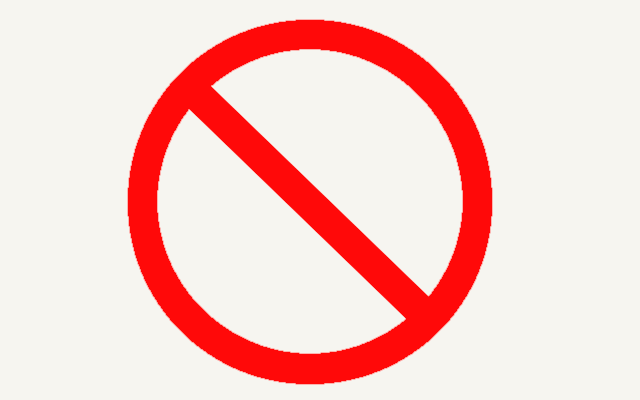The main words for describing what isn’t in German are nein, kein-, and nicht. But which of these words do you use and where?
Nein
Nein (no) is the the opposite of ja (yes). They are used in response to yes-no questions, so when to use them is pretty obvious. Examples:
Is this a yes-no question? ja (yes it is)
Can you build me a rocket ship that can take me to the moon by Tuesday? nein (no I can’t)
Sometimes, the boundary between yes and no is kind of — well, fuzzy. For these cases, naja and jein can be used to mean yes, but — although they are colloquial words and are used infrequently. Here’s an example of each:
Will the big software project be finished next week? Jein (the software will be done, but we still haven’t started the documentation)
Can you get your purple dress from the closet to wear to the party tonight? naja (I can, but I’d really rather wear the green one)
Kein and nicht
Kein- (not-a) and nicht (not) are easily confused with each other, although they are not interchangible. Consider the following:
Es gibt keine Wolken im Himmel heute. (There’s not a cloud in the sky today.) (Note kein- is an adjective and takes adjective endings.)
Ich kann nicht schlafen. (I can’t sleep.)
In some cases, you can convert from one to the other, by rearranging the sentence. Here’s an example:
Ich habe kein Auto. (No car is what I have.)
Ich habe ein Auto nicht. (A car is what I don’t have.)
Both of the sentences above mean the same thing, and both are correct. However, given a choice, the use of kein- is normally preferred.
The best rule
The best rule for deciding whether kein- or nicht is the right choice is this:
- ◆ kein- means the noun isn’t.
- ◆ nicht means the verb doesn’t.
The drei test
If you’re still not sure which one to use, try this test:
- ◆ Form a sentence using kein-. Remember kein- takes adjective endings and should be right before a noun.
- ◆ Replace kein- with drei (three).
- ◆ If needed, change the noun from singular to plural.
If you end up with a reasonably grammatically correct sentence, then kein- is the correct choice. If not, then use nicht. Two examples follow:
- – start with: er hat kein Bleistift (he has no pencil)
- – replace kein with drei: er hat drei Bleistift (he has three pencil)
- – make plural: er hat drei Bleistifte (he has three pencils)
Since he has three pencils makes sense, kein is correct.
- – start with: nein, das stimmt kein
- – replace kein with drei: nein, das stimmt drei (no, that’s three correct)
Since no, that’s three correct makes no sense at all, kein is wrong and nicht should be used instead. The proper sentence is nein, das stimmt nicht (no, that’s not correct)
Singular or plural with kein-?
Similar to English, you have some flexibility to use the singular or plural with something you don’t have. Examples:
Ich habe keine Kinder (I have no children — plural)
Ich habe kein Bett (I have no bed — singular)
If you feel you must have a rule, use this: if it’s something that people generally have more than one of, when they have them, use the plural. If not, use the singular.
Gar — the intensifier
Putting gar in front of kein- or nicht means absolutely, as in Ich möchte gar keine Soße (I want absolutely no sauce [on my sandwich]).
Caution on müssen and können
Be cautious when negating mussen (must). To say you must not in English means you are not allowed to, but Sie mussen nicht means you are not required to. For example, Sie mussen nicht wählen (you don’t have to vote).
To express not being allowed to, use durfen … nicht, as in du darfst sie nicht unterbrechen (you may not interrupt her).
Note while durfen … nicht means may not (no permission), use konnen … nicht (can not) to mean lack of ability or opportunity instead.
Ohne — without
Putting ohne in front of something simply means without that something. Ich gehe ohne Jacke (I’m going [out] without a jacket). A word of caution: while most native German speakers speak their nouns loudly and clearly, minor words like prepositions are spoken more quietly. It’s easy to miss a word or two if you’re not careful.
Verboten- and Verbot
To say something is verboten is to say there’s a rule against it (like a city ordinance). Like laufen in der U-Bahn ist verboten (running in the subway is prohibited). A Verbot, on the other hand, is the rule itself — es gibt ein Verbot gegen laufen in der U-Bahn (there’s a rule against running in the subway).
Look for Jennie’s German Language Classroom for English Speakers on a Wednesday near the end of the month.
Copyright © 2020 by Jennifer Freeman. In particular, permission is not granted to assemble the parts of this series together and distribute them. You may of course post links to the individual posts.
